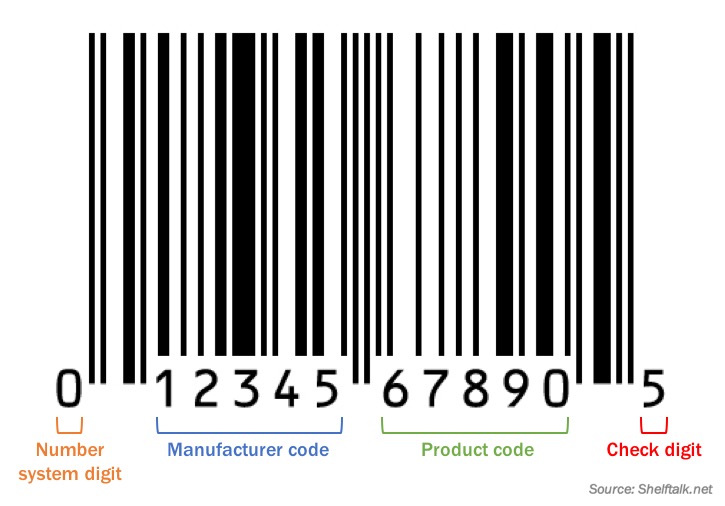Recent Posts
- Content is Still King – Or Is It? With AI – do we need Content?
- Create a Self-Funded Revenue Acceleration Flywheel
- Aligning Your Revenue Architecture with New Offerings: A Critical Step for B2B Growth Companies
- Unlocking the Power of Content: A Roadmap for High-Consideration Sales
- Account-based Marketing
Blog Categories
Account-Based Marketing
B2B Marketing and Sales
Brand Presence
Buyer Engagement
Chief Revenue Officer
Closed-loop Marketing
Content Marketing
CRM
Demand Generation
eMail Marketing
Financial Advisor Marketing
Food & CPG
Inbound Marketing
Investment Management
Marketing Automation
Measurement and Analytics
Newsletter
Revenue Architecture
Revenue Growth
Revenue Marketing
Revenue Programs
Revenue Strategy
Revenue Systems
Sales Effectiveness
Sales Enablement
Sales Excellence
SEO
Social Media
Strategic Account Management
Technology & Websites

What Amazon means for Whole Foods’ core values (and how it’s connected to the Washington Post)
Food & CPG, Revenue GrowthIn 2013, Amazon CEO Jeff Bezos bought the Washington Post. (Granted, he bought it personally instead of via Amazon, but it’s still relevant to the Amazon/Whole Foods story.) At the time, the paper was facing a steady decline and staff layoffs, as most newspapers were, and its online presence was stagnant. Bezos got involved with the business side and its technology—no surprise there—and he didn’t interfere with editorial direction.
Nieman Lab has a transcript from an interview with a Post staffer who talked about the bots they now use to help run the business, deliver news, provide information for stories, and even automate the writing of basic stories. The content management system they built works so well that other news outlets license it from them. And there’s an energy in the Post’s reporting that I haven’t seen in a long time. This is cool stuff.
Web traffic doubled and 1,200 stories are posted per day—500 of them original— outpacing their competitors, including The New York Times.
I think Bezos’s game plan for the Post hints at how Amazon will manage its new supermarket chain.
Refocusing on consumers
Bezos has told staff at the Post to “focus on the reader.” Whole Foods could stand to remember its core shoppers, those consumers who are drawn to Whole Foods’ core values. Some long-time fans feel that the chain has catered too much to a broad market and made less visible their adherence to the core values of environmental protection and support for organic farming. The New York Times wrote about this worry 10 years ago, when Whole Foods had become a “mega-chain” of 303 stores (which has now grown to 431), with “gelato stands, chocolate fountains and pizza counters.”
Legions of shoppers live within proximity of Whole Foods stores but have an aversion to their prices. Clearly, Whole Foods has tried to cater to this audience but delivered mixed messages. They have alternately highlighted the reasonable prices of their store brand items while also creating high-quality, indulgent offerings for those who are indifferent to prices. That juxtaposition has made it hard for shoppers to believe the low-price message.
I believe Amazon will re-focus on Whole Foods’ core values, making noticeable changes in its product assortment to win back true believers who have become alienated. At the same time, they will look closely at the offerings geared toward consumers looking for a more general grocery offering. Can they offer delicious food while respecting the company’s core values, at reasonable prices? And without a doubt, Amazon will reinvent the supply chain — more on that soon — and Whole Foods’ IRMA system, the back-end technology that is universally despised, not unlike the back-end systems at most supermarkets.
How should Whole Foods’ suppliers position themselves for the changes that are bound to happen?
Understanding Spam in Email Marketing
eMail Marketing, Inbound Marketing, Marketing Automation, Revenue ProgramsThis is a guest post with a backgrounder on Spam and eMail tactics.
Email spam, or junk mail, is sending and receiving unsolicited messages via email. While most spam messages are actually untargeted promotional emails, a percentage of junk emails also contain disguised links to familiar websites, but which are actually phishing attempts, or host malware meant to infect your computer system. Junk email can also contain scripts or executable file attachments which can then brick your computer, spy on you, or fill your browsers with adware.
Email spam has a long history, first appearing in the 90s, when botnets, which are practically networks of infected computers, began sending unsolicited emails to thousands of people present on their lists. Regardless that since the Internet became a reality, junk email was prohibited, it still represents a practice today. Email spam stands against the ethical principles of email marketing and can often be classified as unsolicited bulk email, which is mail sent in large quantities, or unsolicited commercial emails. Read more
Better Salespeople Need Less Sales Enablement Content
B2B Marketing and Sales, Content Marketing, Revenue Growth, Sales Enablement, Sales ExcellenceGenerating revenue and winning customers requires a balance of good content and confident sales. Design your sales enablement content around what your medium-skilled salespeople need.
Your top salespeople have sufficient confidence and sales skill that they don’t need a lot of content to be successful in their sales efforts. However an average salesperson with less confidence and less sales skill will require much more content. Top sales people usually need less content because they are able to develop a greater level of customer relationship and trust.
One of the responsibilities of sales management is to specify the content requirements that sufficiently augments the sales skills of the average salesperson so that revenue is successfully generated.
Read more
RIAs: What Your Ideal Client Wants | Fiduciary Financial Advisor
Content Marketing, Financial Advisor Marketing, Revenue GrowthA prospective client may assume that a financial advisor, when giving advice, is acting in their best interest.
Indeed this prospective client may have heard the word FIDUCIARY Financial Advisor bandied about by talking heads and journalists in the financial media and that is now a Rule of Law. For an independent fee-only Financial Advisor (RIA), being a fiduciary will matter a great deal to your ideal client and can be a key if not prerequisite selling point. But they may not grasp the full meaning and intent.
Positioned right, being a fiduciary can be a major point of differentiation from broker/dealers claiming to be financial advisors, but who are associated with vertically integrated brokerage firms that sell products with ‘hidden fees’.
One advisor quoted in the article in a recent New York Times article said “The fiduciary rule ultimately comes down to the fact that some people are making a lot of money at the expense of other people who have no idea how much their adviser is getting paid.” A video from a large independent advisor, compares butchers and nutritionists. Butchers push meat. Nutritionists advise you what to eat, because they have the best interests of the client at heart. The latter is the fiduciary. A Revenue Architects client says, “the professional fiduciary is expected to perform and advise you based on your best interests, even if it comes into conflict with the advisor’s own interests.”
Read more
Extend Lead Qualification Process Beyond BANT
Account-Based Marketing, B2B Marketing and Sales, Revenue Growth, Revenue Systems, Sales Enablement, Sales ExcellenceWe have written and published a number of articles about BANT and other methods of qualification. This is a guest post from Bud Hyler with insights on taking lead qualification to another level.
That is the expectation of purchase for any product in the category, not the expectation of purchasing your product with your differentiating capabilities.
Read more
The secret information inside UPC barcodes
Food & CPG, Revenue GrowthSome people believe all Universal Product Codes (UPCs) contain the number 666, representing the number of the beast or the anti-Christ.
Snopes cites the relevant Bible verse: “No one could buy or sell unless he had this mark, that is, the beast’s name or the number that stands for his name” (Revelation 13:17-18).
In a story on UPCs and this theory, The New Republic quotes from Revelation, which discusses the End Times:
As interesting as this sounds, it stems from a misinterpretation of the bars that appear on UPCs. They were interpreted to read as 666. But in reality they are just separating marks or guide bars, which look like the bars that represent sixes but are slightly different and have no numeric meaning.
Scanners read the width of the bars and the gaps between the bars in a UPC to convert them into a number that represents the product.
I’ll describe the UPC-A version of the barcode, which is used in the United States for most retail products. Other types of barcodes exist for some product categories, like books, and in countries outside the United States.
Number system digit: This number determines the product’s category.
Manufacturer code: This set of five numbers is assigned to a manufacturer by GS1, a nonprofit that governs the assignment of U.S. UPCs.
Product code: The manufacturer determines this set of five numbers; it can be any code the manufacturer desires.
Check digit: This number is determined by a formula. The scanner calculates this formula on its own and then checks against the numbers it scanned to determine whether it scanned the correct digits. If there was an error—say, due to a smudge on the package—the check digit won’t match, and the product will scan with an error.
Note that the information conveyed only identifies the manufacturer and the product. No pricing or other information is provided. At a retail location, the register will look up the product information and cross-reference it to find the right price or any other information. There are no series of sixes or any other information included in a UPC that can somehow personally identify a shopper. Furthermore, these codes have not been affixed to people, as some have feared.
Some other notes and resources:
1. Using UPCs in syndicated data like Nielsen and IRI: I usually look for the 10 digits represented by the manufacturer code plus the product code. Most U.S. products that I’ve worked with start with a zero as the number system digit, and those leading zeroes are omitted by Nielsen and IRI. There have been a few instances where I have worked with products that contain a non-zero number system digit, and one must be careful to include those digits when searching.
2. If you need to obtain UPCs for your products, talk with GS1. There are some UPC resellers who can sell single UPCs, but that will make it hard to do business with anyone but the smallest of retailers.
3. Wikihow has a good tutorial on UPCs, and Keyence can help you decipher the bars in case you don’t trust the numbers printed below them.